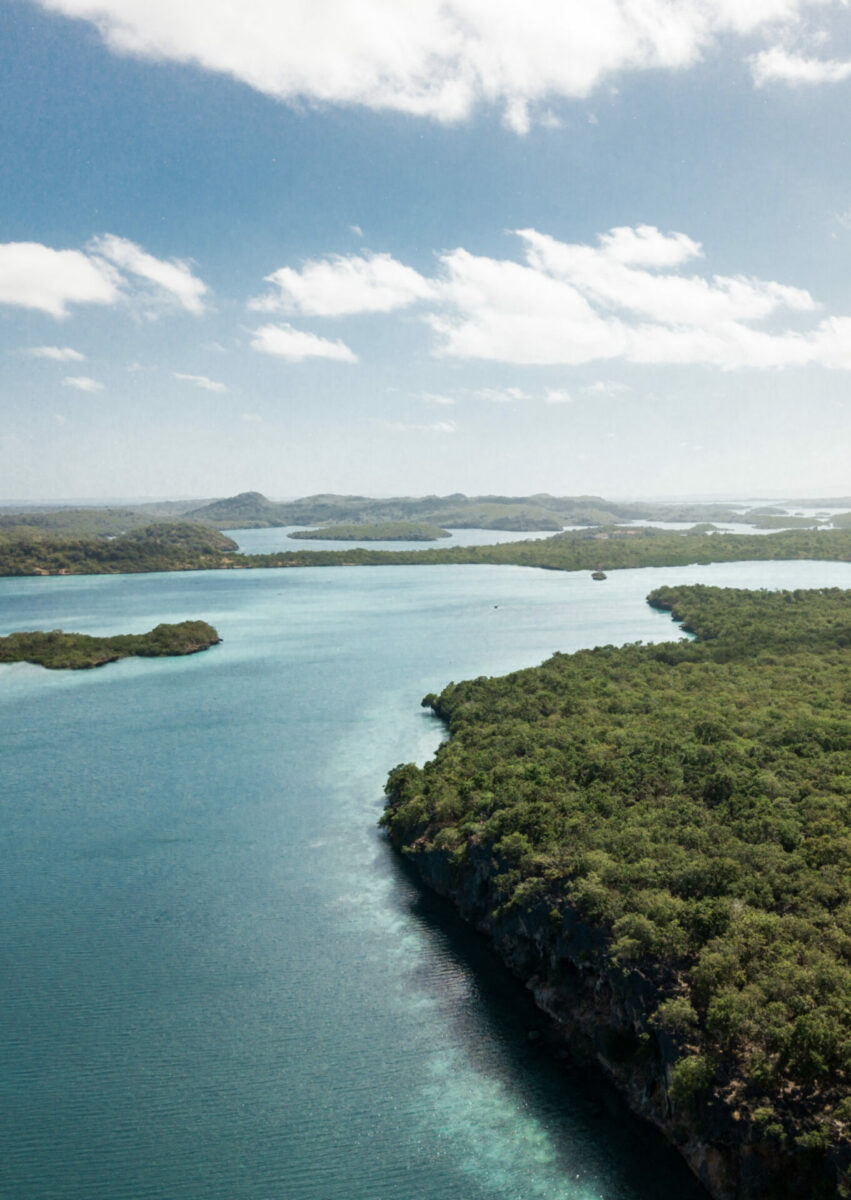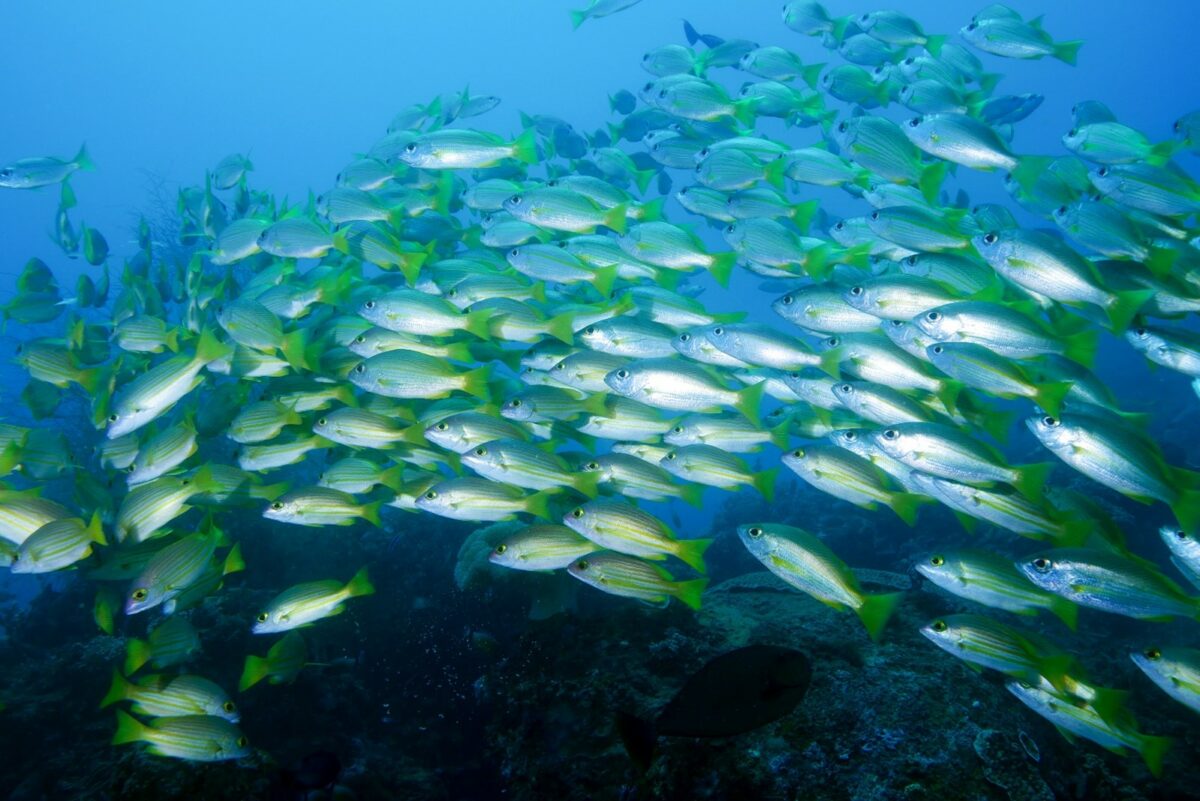Image Credit: UNDP Indonesia for the ATSEA-2 Project

Covering an area of more than 1 million km², the Arafura and Timor Seas (ATS) region is especially rich in marine biodiversity and is home to a vast array of sea creatures. Sustainability of marine ecosystem services is therefore essential, not only to the conservation of migratory marine species and their critical habitats, but also to the food sources and livelihoods of coastal communities living in the region.
With this concern in mind, four countries that border the ATS region—namely Australia, Indonesia, Papua New Guinea, and Timor-Leste—have recently endorsed a Marine Protected Area (MPA) network design that aims to support the health and welfare of their waters and coastal communities.

Addressing local threats, while also increasing fisheries productivity, protecting biodiversity and building resilience to climate change.
The ATS region supports foraging and migration for various rare and threatened sea turtle species. Cognizant of this fact, littoral nations in the region are taking action to incorporate sea turtle protection and reproduction into their MPA network design. As of 2020, MPA coverage in the ATS region was equal to 265,324.49 km² spanning four countries. In the coming years, a total of 6,263.79 km² in new MPAs is planned for Indonesia and Timor-Leste. This endorsement serves as a guidance for establishing new MPAs in the future.
Australia’s National Representative System of Marine Protected Areas (made up of Australian, state and territory government marine parks) covers 45% of Australian waters, or around 4 million km². This national system includes coastal and offshore marine parks in the ATS region that are helping to protect and conserve the biodiversity of the Arafura and Timor Seas and ensure the use of marine resources is ecologically sustainable.
“Australia is strongly committed to protecting the health of the Arafura and Timor Seas,” explains Dr. Andrew Chek, who is the Acting Director in the Department of Climate Change, Energy, the Environment and Water (DCCEEW) in Australia and ATSEA-2 National Focal Point in Australia. “Management of our marine parks in the region contributes strongly to ATSEA Program objectives and we look forward to continued engagement with Indonesia, Timor-Leste and Papua New Guinea (PNG) as the MPA network develops into the future,” he added.
Similarly, PNG is also taking the initiative to assess priority areas for MPAs. The government plans to assist the 13 treaty villages recognised under the Torres Strait Treaty to implement the necessary actions in South Fly District. Noan Pakop, who is the Deputy Managing Director of the National Fisheries Agency (NFA) of PNG and ATSEA-2 National Project Director of PNG, says that “respecting traditional communities’ customs and actively seeking ways to reach an equilibrium with them is essential for the sustainability of conservation for years to come.”
Meanwhile, Indonesia has set a target of establishing 300,000 km² of MPAs by 2030. The archipelago recently established four new MPAs in a region proposed by the ATSEA-2 Project; Tanimbar, in the eastern province of Maluku. This new designation has increased Indonesia’s efforts up to 4% from its previous 10% goal to “effectively manage” national waters by 2030. The ATSEA-2 Project also supports the Ministry of Marine Affairs and Fisheries (MMAF) blue economy strategy in expanding conservation areas, with a target of 30% of the total area of Indonesian waters.
“We have a goal and we still have a long way to go before we can achieve it,” said Yayan Hikmayani, Head of the Centre for Fisheries Research at the MMAF of Republic of Indonesia, who is also the ATSEA-2 National Project Director of Indonesia. “Establishing new areas is just the first step before we can engage with local communities and increase our technical capacity to support these MPAs, so that the blue economy can be practically implemented in managing the marine and coastal areas,” she added.
Timor-Leste is also shifting focus towards protecting its marine diversity and reworking its economy. With the country currently standing at a critical development juncture, it is essential that Timor-Leste prioritises the diversification of income sources. Their recent Decree Law no. 6/2020 established a legal regime for the protection and conservation of marine biodiversity. It stipulates the authorities responsible for the sustainable use of resources, planning and monitoring of in-situ conservations, as well as research and development of marine biodiversity in the country.
“Our national ecological gap analysis has helped us to identify the seven shallow waters and five deep-water regions that are suitable candidates for MPAs in our country,” said Acacio Guterres, Director General of Fishery, Agriculture and Marine Resources, Ministry of Agriculture and Fisheries (MAF) of Timor-Leste, and ATSEA-2 National Project Director of Timor-Leste. “We intend to start preparing these areas for future MPAs,” he added, before also reiterating the Timor-Leste government’s commitment to continuing the ATSEA Program, in order to achieve the conservation and sustainable management of marine and coastal ecosystems in the ATS region.


